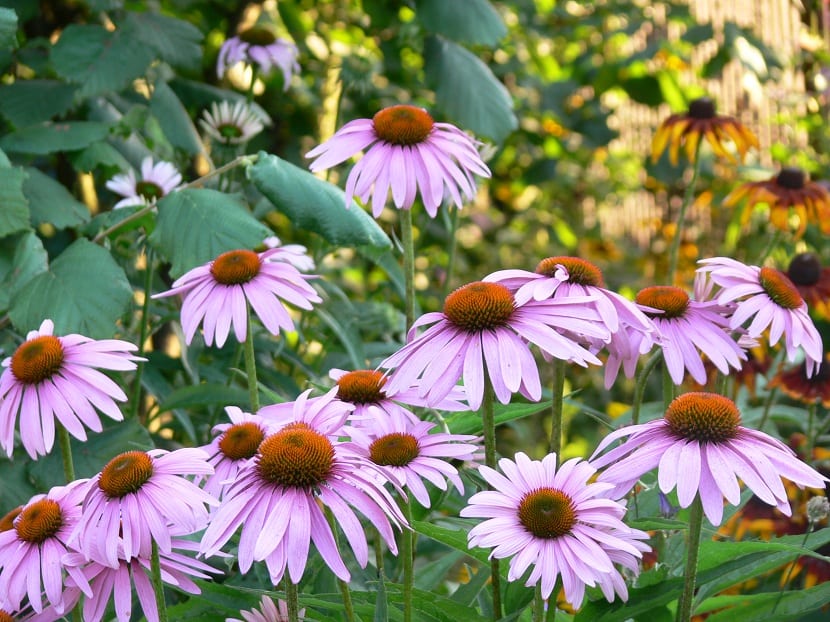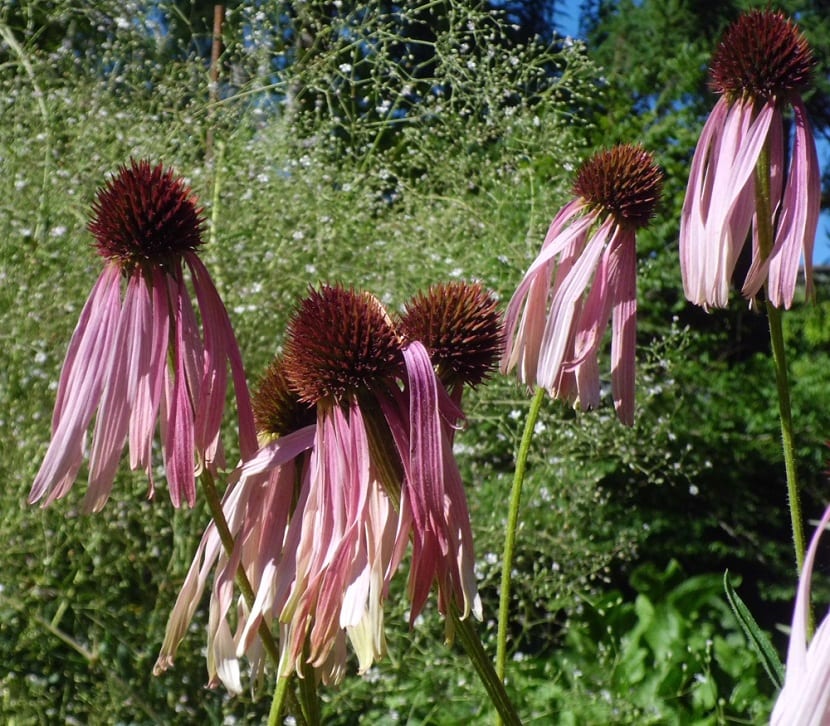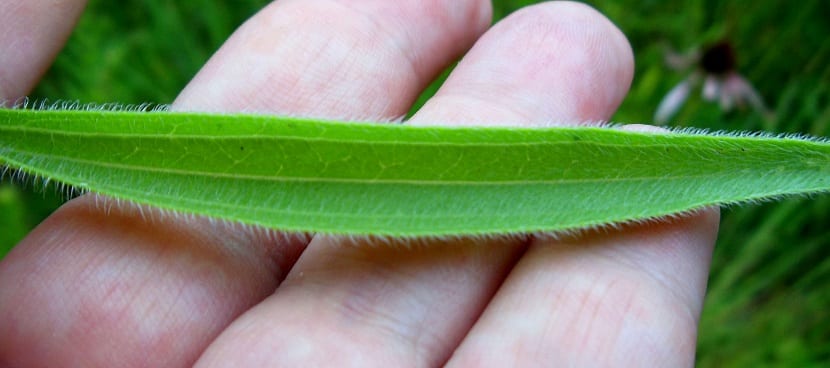
Among the latests Moravia's compositions echinaceae, we find some interesting varieties with medicinal uses. Today we are talking about a widely cultivated and used variety. It's about the Echinacea angustifolia. Among its common names we find purple prairie flower, conical prairie flower or rudbeckia. It belongs to the Composite family and its origin comes from the United States. It is a plant with medicinal uses but it also has decorative uses. Thanks to this, it has spread to almost the entire world.
Do you want to know more about the Echincea angustifolia? We explain here its characteristics, properties and how to grow it.
Key features

The stem of this plant is dark green. If the environmental and care conditions given are ideal, it can measure up to 1,2 meters in height. The leaves, like the stems, are dark green. Its surface is somewhat rougher, with a triangular and elongated shape.
The most decorative and striking power that the Echinacea angustifolia are its flowers. It is the most striking part of the plant without a doubt. In this variety of echinacea, the flowers are pink. They can also be white in the variety Pale Echinacea or red and purple in variety Purple Echinacea. Both varieties are also well known, cultivated and used almost all over the world. The appearance of these plants are similar to those of daisies. Its fruit is an angular tetraquenium where it has the seeds for its expansion.
The natives of North America were the first to use this plant as medicine. Since it is originally from there, medicinal experiments were used on these people. It was used mainly to treat some respiratory diseases and to relieve symptoms of snake bites. To do this, they took infusions of the root and powdered leaves. In this way, effects such as relieving irritation of the throat, gums and mouths and treating some diseases such as mumps, measles, rheumatism and smallpox were also achieved.
It was also useful to treat some toothaches. Comanches applied the root of the plant directly to the affected tooth.
Cultivation of Echinacea angustifolia

We are going to review all the requirements and needs that the Echinacea angustifolia for its cultivation. The first thing is the weather. Requires a temperate climate and is able to withstand some frosts or times when the temperature remains very low. In order to survive these conditions, you need constant exposure to the sun. You can also place it in semi-shade if the place where you live has a strong sun. Thus, we will be preventing the leaves from being damaged. Like it supports some frosts, it can withstand high summer temperatures very well.
As for the soil, it must have clay texture, loose and with good drainage. If the soil is compacted, it would make it very difficult for the roots to spread. It is important that the soil has good drainage so that the irrigation water does not crowd. In addition, this allows for better aeration and does not allow excess water and moisture to accumulate.
Although echinaceae bear drought well, we must maintain the soil with a certain degree of humidity so that they grow faster. This does not mean that we have to spend with the irrigation. The plant does not support waterlogging. Too much water will cause the roots to rot. Therefore, you have to let the soil begin to dry up to water again.
Reproduction

If we want to reproduce the Echinacea angustifolia, we have to make use of the seeds. For this it is important to have the soil prepared with some peat and ensure that it has good drainage. The seed is placed on the ground and we do not bury it. What we have to do is deposit it and cover it with a thin layer of sand. During the germination stage, it is vitally important to protect the seed from birds and rodents. It is advisable to leave a distance of about 40 or 45 cm between the rows and 30-35 cm between the seeds. If we have done this step well and we have taken care of them, in just 15 days they will germinate.
If we want to perform a transplant, we must wait for the plant is germinated between 6 and 7 weeks. The sowing is convenient to do it in spring, since it will be more successful in its growth. For reproduction, we can also do it by division of the plant and it will have to be done in autumn.
Another method to reproduce echinacea is to divide the root into pieces.. We will take segments up to 12 cm long from the root of a plant that is already between 3 or 4 years old. From this root we can obtain various plants. Flowering takes place from the end of June to August.
Properties and benefits

As we have mentioned, the Echinacea angustifolia It is used for medicinal purposes. The active principles that this plant has we have the equinacina, the caffeic acid and the chicorico. These active ingredients increase the production of interferon and white blood cells. Thanks to these properties, this plant has been classified as a vegetable antibiotic.
Among its properties we find:
- Antispetic, since it increases the resistance of the skin to the attack of viruses, fungi and bacteria.
- Anti-inflammatory. Helps fight the effects of chronic arthritis and reduces inflammation by up to 22%.
- Healing, since it helps to restore the edges of open wounds. It also helps treat some ulcers, skin infections, boils, and chilblains.
- antirust. It protects the skin from the damaging action of oxygen and free radicals.
To consume the Echinacea angustifolia juices and tinctures can be used. Thanks to the extract that they have in the root, some herbal teas can be prepared. Infusions and salads are prepared with the leaves.
I hope this information helps you to know more about this echinacea and you can grow it in your garden to enjoy its decorative value and medicinal power.